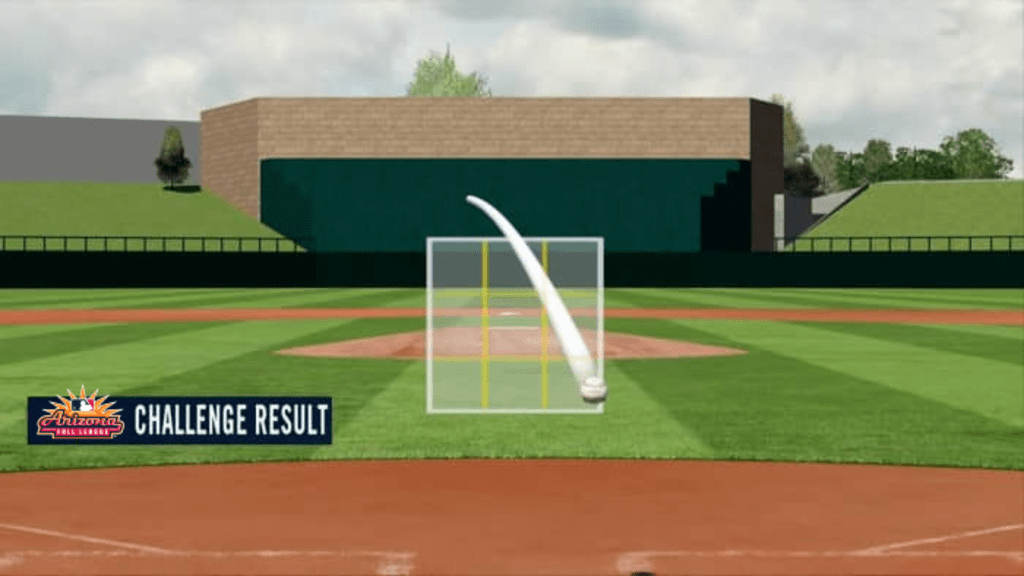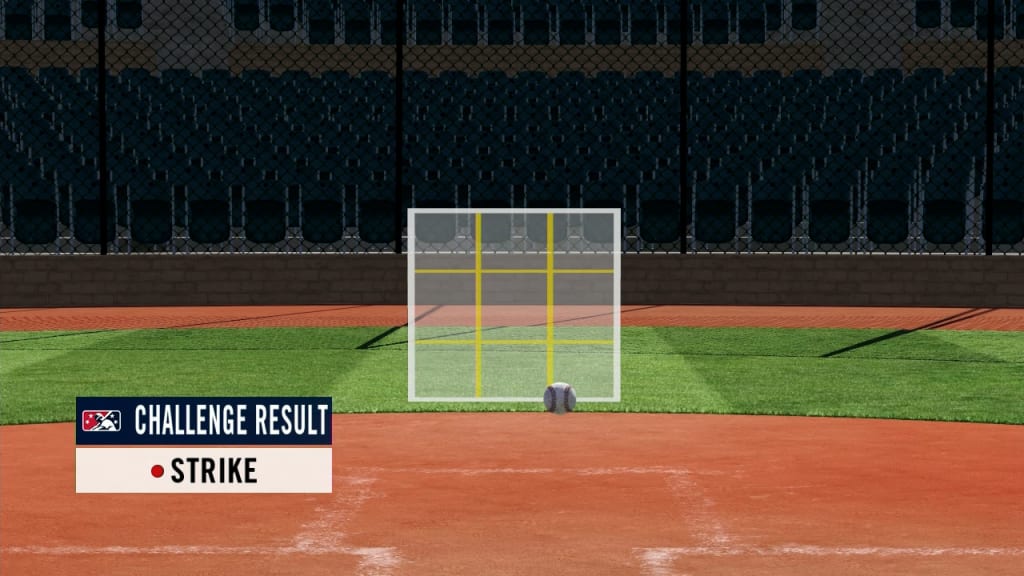New automated ball-strike system a hit in the AFL

SCOTTSDALE -- There are different lines of thought in baseball, both among fans and those in the industry, about the future of calling balls and strikes. Those who might be “old school” want human umpires, and humans only, to continue being arbiters of what’s a strike and what’s not.
Then there are those who believe in a more automated future, where the strike zone is determined solely by a computer.
During the 2022 Minor League and Arizona Fall League seasons, Major League Baseball has been experimenting with what could be a meeting in the middle between those factions: The automated ball-strike (ABS) challenge system.
The AFL is an ideal testing ground for this technology since it features top prospects who are on the cusp of the Majors, and based on what these players are saying, the ABS challenge system has a lot of supporters.
Here’s how it works:
Rather than using “robot umps” (powered by Hawk-Eye tracking technology) to automatically call balls and strikes, as the AFL experimented with in 2021, the umpires make the calls as usual. Hitters, catchers and pitchers (and only them) then have the ability to challenge a call, which triggers a decisive visual of the pitch on the video board. Each team gets three challenges per game, with successful challenges retained for future use in the game.
This browser does not support the video element.
• Explaining the ABS challenge system
The trial run in the Fall League came to an end on Friday with the final game played at Salt River Field, the AFL park equipped with the challenge system, and the early reviews have been very positive.
Brewers infield prospect Tyler Black had success on more than one occasion having a call overturned in his favor and not only thinks it improves the game, but sees the marketing side of it as well.
“I think they’ve done a great job with it,” Black said. “I had no experience with it, but so far I love it. I think the biggest thing is they do it quick and efficiently. It’s kind of cool how they put it on the video board, like tennis. I think it could be great for crowd engagement and stuff like that.”
The dugouts certainly have enjoyed watching the video appear on the scoreboard and watching to see if the call is upheld or overturned.
“The other day I challenged one and it was correct and the boys were giving it to me,” Black said. “It was great. I’ve seen it go the other way, too, and the other team gets on guys.”
“It’s cool, man,” said Cardinals top prospect Jordan Walker, who plays for the Salt River Rafters. “If you think that the umpire was wrong, you can check it. I think it’s a really good addition to what we have as of right now.”
The ABS challenge system even had a bit of a viral moment when a clip circulated of Yankees prospect Jasson Domínguez correctly challenging a call and drawing a walk as a result.
This browser does not support the video element.
“It’s a lot of fun with the pitch challenge,” Red Sox infielder Nick Yorke added. “It gets everyone into it after someone challenges. Everyone is like, ‘Ooooh,’ after they see the pitch. I think it’s been pretty fun. So I’m a fan of it.”
Entering Friday’s game at Salt River, there had been a total of 15 games with the system in place. An average of 4.4 challenges per game -- 2.47 by hitters and 1.93 by the defense -- had been made. A third (33.33 percent) of the challenges have been successful. Hitters have been a little more accurate with their use of the challenge, at 35 percent, while pitchers and catchers have been right 31 percent of the time.
Those rates are down from the usage of the system in Single-A and Triple-A during the 2022 season. In 359 Single-A games, player challenges were correct 43.8 percent of the time, while a smaller sample of Triple-A games (91 games) had a 48.3 percent success rate.
“I haven’t challenged anything; I should’ve [Thursday],” Cubs first baseman Matt Mervis said. “I wasn’t sure if we had a challenge left. I like it so far. I think three challenges for each team is a good amount, and if you get it right, you get that challenge back. If a big or impactful call is made, then I think the player should have the ability to challenge it, whether it’s a strikeout or a hitter that wants another chance on a missed strike call. We’ve had a couple overturned and a couple upheld and the system looks pretty accurate to me. I’m excited to see it.”
This browser does not support the video element.
The ABS provides more “scientific” proof of the strike zone, without completely removing the human element from umpires. In fact, there’s even the added element Mervis mentions above, that a team and player have to pick and choose when to challenge.
“I’m a big believer in the human element of the game,” Black said. “I think we have to keep that around as long as we can. I think the ABS adds even more of that human element in terms of the challenging.
“At the end of the day, a ball’s a ball, a strike’s a strike. I think the difference between 2-1 and 1-2 is definitely big. The more you can narrow that down and get proof of what’s a strike, it’s going to make a huge difference.”
It’s not just hitters who think that’s true. Mets right-hander Mike Vasil started in Salt River on Oct. 14 and he’s a fan as well, thinking it’s good for the game, even if it might occasionally cost him a strike here and there.
“Personally, as a pitcher, I really like the challenge system,” Vasil said. “Even if I do throw a strike that’s called a ball, I think it keeps the game true for where it should be. I think it also helps the umpires keep a consistent zone. For a pitcher, you can be like, ‘I threw something nasty’ and it might be on the border and you’d be able to challenge it. I have always been a big fan of the challenge system.”
While ABS challenge is not among the rule changes coming to MLB in 2023, it could be a possibility for future seasons.
